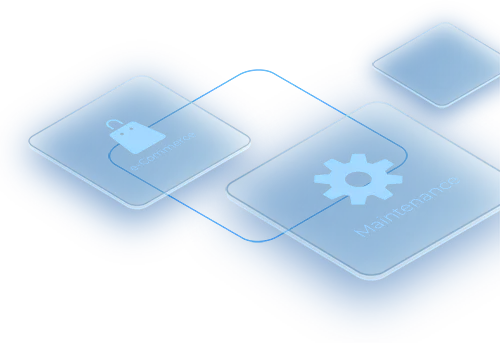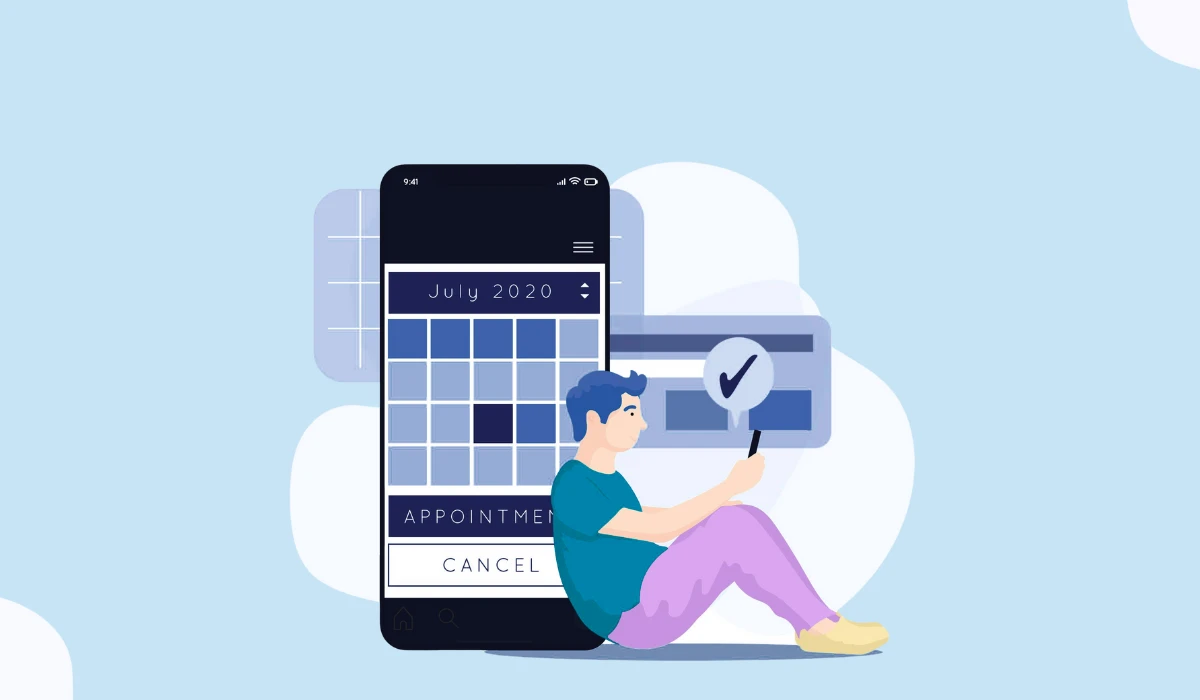Key Takeaways
-
Queue management systems enhance both sides of service — giving customers convenience through mobile check-ins and real-time updates while empowering staff with better visibility and control.
-
Smart technology and integration matter. From API connections to AI-driven analytics, modern systems adapt easily to existing business tools and data workflows.
-
Scalability and security define long-term success. A flexible, cloud-based system that protects customer data grows with your business needs.
Customer-Facing Features
A great queue system isn’t just for the staff—it makes life easier for customers too. Modern queue management systems are built with customers in mind, offering features like virtual check-ins, mobile alerts, and multilingual support.
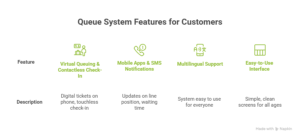
Virtual Queuing & Contactless Check-In
Imagine walking into a bank and grabbing a digital ticket on your phone instead of standing in line. That’s virtual queuing. Many systems also let you check in without touching kiosks, keeping things safe and smooth. This is one of the must-have features of a high-quality queue management system.
Mobile Apps & SMS Notifications
Nothing beats a system that keeps customers updated. Mobile apps or SMS alerts tell you your place in line, estimated waiting time, or when it’s your turn. This reduces stress and keeps everyone informed.
Multilingual Support
If your business has customers from different backgrounds, multilingual support is a lifesaver. It makes the system easy to use for everyone, not just those who speak the local language.
Easy-to-Use Interface
No one likes confusing screens. A simple, clean interface ensures customers of all ages can grab a ticket or check their queue without frustration.
Management & Staff Features
Queue management isn’t just about customers—it also makes life easier for staff and managers.
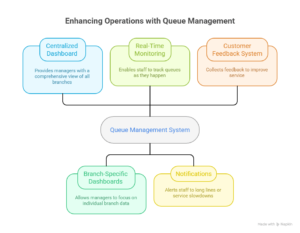
Centralized Dashboard & Branch-Specific Dashboards
Managers can see all branches from a central dashboard or dive into individual branch data. This keeps operations smooth and guarantees no line gets out of control.
Real-Time Monitoring & Notifications
Staff can keep track of queues as they happen, getting alerts if lines are getting long or if service slows down. Quick adjustments keep customers happy.
Customer Feedback System
Collecting feedback after service helps businesses improve. Knowing what’s working and what’s not can make a huge difference.
Technology & Integration Features
The lines of the modern queue systems are not simply in control, but they are combined with the technologies that are already present in the tech business.
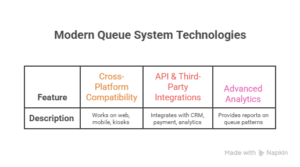
Cross-Platform Compatibility (Web, Mobile, Kiosks)
Whether it’s a web browser, mobile phone, or self-service kiosk, your system should work everywhere. Flexibility is key for both customers and staff.
API & Third-Party Integrations
Integration with CRM systems, payment platforms, or analytics tools makes operations smooth. This ensures all parts of your business talk to each other.
Advanced Analytics, Reports, & Business Intelligence
Understanding queue patterns helps businesses plan better. Reports show peak hours, average waiting times, and service efficiency—all helping staff make smarter decisions.
Scalability & Future-Proofing
A good system grows with your business.

Cloud-Based Management & Remote Access
Cloud-based systems let managers check queues and reports from anywhere. No need to be linked to a physical location.
Flexibility, Customization & Maintenance
Every business is unique. The potential to customize ticket types, alerts, or layouts ensures the system fits your specific needs.
Security & Data Protection
Queue systems handle sensitive customer info, like contact numbers or appointments. Strong security keeps this data safe and builds customer trust.
Industry Use Cases
Queue management isn’t just for one kind of business — it’s useful pretty much anywhere people have to wait their turn.

Retail & Shopping Malls: Ever been stuck in a long checkout line during a sale? A smart queue system keeps things moving, so shoppers don’t lose patience and walk away.
Hospitals & Clinics: No one likes waiting when they’re not feeling well. With queue systems, patients get seen faster, and doctors or staff can plan their day better.
Banks & Financial Centers: When the lunch-hour rush hits, queue tools make sure customers are served in the right order without any confusion.
Government Offices & Small Businesses: Whether it’s people renewing licenses or paying bills, a proper queue setup keeps everything organized, fair, and calm — even on the busiest days.
FAQs on Queue Management System Features
What is the most important feature of a Queue Management System?
The most important feature depends on your business, but virtual queuing and real-time monitoring are often top priorities since they improve both customer experience and staff efficiency.
How does virtual queuing improve customer experience?
It allows customers to wait without having to be placed in a queue, and they stay informed via SMS or through the apps. Reduced time spent in line.
Do all industries need the same features?
Not exactly. Retail stores focus on fast check-ins, while clinics might need appointment scheduling and detailed reporting. The key is choosing a system that offers flexibility and scalability.
Conclusion
A queue management system isn’t just another piece of tech — it’s a simple way to make life easier for both customers and your team. Think of it like giving your business a smoother rhythm. With things like virtual check-ins and live dashboards, everything runs without the chaos.
At EBR Software, we believe the right queue management software should make your day easier, not more complicated. Whether you’re handling one branch or an entire network, our smart system keeps queues organized, staff less stressed, and customers happier — every single day.









